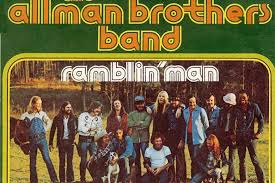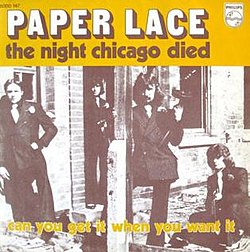 If rock ‘n’ roll was supposed to be about rebellion, Jethro Tull decided to rebel against rebellion itself. Released in 1971, Aqualung wasn’t just another entry in the sprawling prog rock catalog of the era—it was a full-blown concept album that managed to be spiritual, cynical, and weirdly tender, often in the same breath. It’s the sound of a band that wanted to take you to church but also heckle the preacher along the way.
If rock ‘n’ roll was supposed to be about rebellion, Jethro Tull decided to rebel against rebellion itself. Released in 1971, Aqualung wasn’t just another entry in the sprawling prog rock catalog of the era—it was a full-blown concept album that managed to be spiritual, cynical, and weirdly tender, often in the same breath. It’s the sound of a band that wanted to take you to church but also heckle the preacher along the way.
At its center was Ian Anderson—rock’s only frontman who could make a flute look dangerous. With his medieval-man-on-a-park-bench aesthetic, Anderson led Jethro Tull into one of the most uniquely theatrical and cerebral albums of the decade. Aqualung is alternately beautiful and biting, alternating between the sacred and the profane, and somehow, fifty years later, it still sounds like nobody else.
The Album That Smelled Like Cigarettes, Rain, and Revolution
Aqualung arrived at a strange crossroads in rock history. The late ‘60s idealism had curdled, prog rock was ballooning into planet-sized compositions, and every band seemed to be racing to see who could fit the most existential dread into a gatefold sleeve.
But Jethro Tull didn’t just go big—they went strange. The album opens with the unforgettable title track, “Aqualung,” a seven-minute odyssey about a homeless man “eyeing little girls with bad intent.” Not exactly Feel-Good Hit of the Summer, but that’s the point. Anderson’s portrayal of society’s outcasts—dirty, shunned, human—was both empathetic and uncomfortable.
The song opens with one of the most iconic riffs in rock history. It’s dirty, angular, and oddly regal, setting the tone for an album that walks a fine line between gutter and grandeur. When Anderson snarls “Snot is running down his nose,” it’s like he’s daring you to look away—but you can’t. You’re hooked.
Beneath the grime and snarl, there’s a heartbreaking tenderness to the song. Anderson saw humanity in the forgotten. He wasn’t mocking Aqualung; he was holding up a mirror to a world that looked away.
A Flute in a World of Feedback
You could argue that Aqualung is the only album in history where the flute solo could melt your face off. Ian Anderson’s mastery of the instrument isn’t just impressive—it’s downright defiant. At a time when guitar heroes were worshipped like Greek gods, Anderson grabbed a flute, stood on one leg, and said, “Yeah, this is rock and roll now.”
And somehow, it worked.
Tracks like “Cross-Eyed Mary” prove it. The song feels like the sleazy cousin of the title track—another portrait of society’s outsiders, this time a teenage sex worker who services “the jackknife barber of his youth.” It’s grim, theatrical, and driving, powered by Martin Barre’s meaty guitar riffs and Anderson’s flute darting through like a mischievous spirit.
Anderson wasn’t just using the flute as a novelty; he used it as punctuation. It screamed, it sneered, it laughed. It turned into a character all its own, elevating the band’s sound from British blues leftovers into something mythic and literary.
The “Concept Album” That Wasn’t Supposed to Be One
Ask ten Jethro Tull fans what Aqualung is about, and you’ll get twelve different answers. Officially, Anderson denied it was a concept album. Unofficially, it plays like one of the most cohesive “non-concept” albums ever recorded.
Side A—the “Aqualung” side—is a gallery of humanity’s misfits: the homeless, the lost, the morally gray. Side B—the “God” side—turns its gaze heavenward, exploring faith, hypocrisy, and what it means to believe in a world that feels increasingly soulless.
“Wind-Up” closes the album with Anderson’s most biting commentary on organized religion:
“He’s not the kind you have to wind up on Sundays.”
That line alone sums up the entire tension of the record—between spirituality and the institutions that claim to own it. It’s weary but defiant, skeptical but searching. You can almost hear Anderson lighting a cigarette in a church pew.
When Prog Rock Got a Soul
For all its ambition, Aqualung never disappears up its own concept. There’s a warmth here—a grounding humanity that a lot of prog rock of the time lacked. Genesis was mythologizing, Yes was galactic, King Crimson was dissonant chaos—but Jethro Tull stayed in the muddy streets.
“Cheap Day Return” and “Mother Goose” show Anderson’s softer side, full of acoustic warmth and wry humor. “Mother Goose” especially feels like a daydream from the mind of someone wandering through England with nothing but a notebook and a flask of tea.
And then there’s “My God,” one of the most daring songs of the era. It begins with somber acoustic strumming, then erupts into orchestral fury as Anderson takes aim at the commercialization of religion. “My God” isn’t anti-faith—it’s anti-hypocrisy. It’s what happens when someone who actually believes gets fed up with the people running the show.
The Band Behind the Sermon
While Anderson is the undeniable focal point of Aqualung, the album’s success also rests on the underrated genius of his bandmates. Martin Barre’s guitar work deserves a seat in the pantheon of 70s greats. His tone—thick, biting, melodic—is as essential to Aqualung as the flute. Barre’s solo on the title track is a masterpiece of restraint and release, perfectly balancing the song’s dark humor with genuine pathos.
The rhythm section—Jeffrey Hammond-Hammond on bass and Clive Bunker on drums—anchors the chaos beautifully. They keep the band grounded while still allowing Anderson’s eccentricity to flourish. The production, handled by Anderson and Terry Ellis, feels warm and organic, like it was recorded in a candlelit cathedral rather than a sterile studio.
You can almost hear the wood grain in the acoustics, the analog hiss in the quiet moments. It’s imperfect in the best way—human, tactile, alive.
The Weirdness That Worked
Let’s be honest—Jethro Tull was a weird band. Anderson looked like a medieval busker who time-traveled into a rock festival. They wore velvet coats while bands like Deep Purple were setting amps on fire. And yet, somehow, Aqualung broke through to the mainstream.
The album hit No. 7 on the Billboard 200 and went on to become the band’s defining statement. It’s rare for an album this strange to become a commercial success, but Aqualung had something most prog bands didn’t: hooks.
Even amid the complex arrangements and lofty lyrics, there are melodies you can hum. That’s what made it stick. Aqualung was brainy without being boring, theatrical without being self-indulgent.
Anderson’s charisma helped, too. He played the role of the rock poet with a wink, aware of the absurdity but never apologetic for it. He was part troubadour, part troll, and that combination made him endlessly watchable.
Aqualung’s Ripple Effect
Looking back, Aqualung feels like the moment when Jethro Tull transcended their cult status and carved their name into the rock canon. It’s not just their best-selling album—it’s the one that defined them.
It also influenced an entire generation of artists who wanted to blend intellect with electricity. Without Aqualung, you don’t get Rush’s 2112, you don’t get Iron Maiden’s Seventh Son of a Seventh Son, and you might not even get the confidence for bands like Tool to turn theology and philosophy into heavy rock anthems decades later.
Ironically, though, Aqualung also boxed Tull into a corner. The success of this “non-concept” album led Anderson to double down on the idea with 1972’s Thick as a Brick, a one-song, 40-minute parody of concept albums that somehow became an even more complex masterpiece. But Aqualung remains the touchstone—the bridge between folk, prog, and hard rock that nobody else has quite managed to replicate.
The Album’s Enduring Magic
There’s a reason Aqualung still resonates more than half a century later. It’s not just nostalgia—it’s relevance. The themes Anderson wrestled with in 1971 are still painfully current: poverty, alienation, the hypocrisy of institutions, the search for meaning in a cynical world.
And yet, despite all that darkness, the album never gives up on beauty. There’s humor in the despair, hope in the skepticism. The melodies are too warm, the arrangements too lovingly crafted, for this to be nihilism. Anderson isn’t tearing down faith; he’s begging for it to be real again.
That’s the genius of Aqualung: it refuses to pick a side between sinner and saint. It knows we’re all somewhere in between.
Final Thoughts
By the time Aqualung hit turntables in 1971, Jethro Tull had found their voice—a strange, brilliant blend of folk mysticism, hard rock, and social commentary. What could’ve been just another prog curiosity turned into one of the defining albums of the decade.
It’s theatrical without being pompous, critical without being cruel, and utterly sincere in its weirdness. Ian Anderson turned a flute into a weapon, a sermon, and a punchline—all at once—and somehow made it cool.
Half a century later, Aqualung still feels alive. It’s the sound of a band that didn’t just push boundaries but laughed at them, a reminder that the best rock ‘n’ roll doesn’t always come from leather jackets and Les Pauls. Sometimes it comes from a scruffy man in a trench coat, one leg raised, blowing the most defiant flute solo in history.
Aqualung wasn’t just Jethro Tull’s masterpiece—it was their manifesto. And to this day, it’s still asking the same question it did in 1971: what does it really mean to be human, to believe, to ramble through life with your heart and flute in tune?


